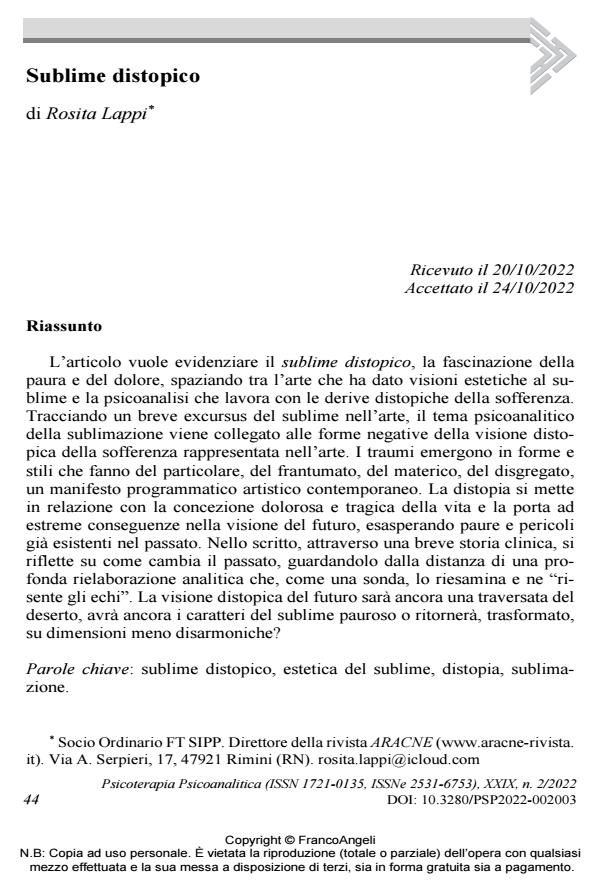Dystopian sublime
Journal title PSICOTERAPIA PSICOANALITICA
Author/s Rosita Lappi
Publishing Year 2022 Issue 2022/2
Language Italian Pages 13 P. 44-56 File size 200 KB
DOI 10.3280/PSP2022-002003
DOI is like a bar code for intellectual property: to have more infomation
click here
Below, you can see the article first page
If you want to buy this article in PDF format, you can do it, following the instructions to buy download credits

FrancoAngeli is member of Publishers International Linking Association, Inc (PILA), a not-for-profit association which run the CrossRef service enabling links to and from online scholarly content.
The article aims to highlight the dystopian sublime, the fascination of fear and pain, ranging from art that has given aesthetic visions to the sublime and psychoanalysis that works with the dystopian drifts of suffering. Tracing a brief excursus of the sublime in art, the psychoanalytic theme of sublimation is connected to the negative forms of the dystopian vision of suffering represented in art. The trauma emerges in forms and styles that make the particular, the shattered, the material, the broken up into a contemporary artistic programmatic manifesto. The dystopia relates to the painful and tragic conception of life and takes it to extreme consequences in the vision of the future, exasperat-ing fears and dangers already existing in the past. In the paper, through a brief clinical history, he reflects on how the past changes, looking at it from the distance of a profound analytical reelaboration, which reexamines it like a probe and "feels the echoes". Will the dystopian vision of the future still be a crossing of the desert, will it still have the characteristics of the sublime fearful or will it return, transformed, to less disharmonious dimensions?
Keywords: dystopian sublime, aesthetic of sublime, dystopia, sublima-tion.
Rosita Lappi, Sublime distopico in "PSICOTERAPIA PSICOANALITICA" 2/2022, pp 44-56, DOI: 10.3280/PSP2022-002003